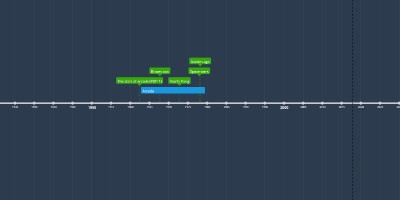Fifth Gen (dec 28, 1996 – dec 19, 2002)
Description:
Also known as the 32-bit era or later the 64-bit era, the fifth generation of video games saw the explosion of 3D graphics and compact disks, and the rise of Sony as a video game console developer. Consoles released during this era include the Sega Saturn, Sony PlayStation, and the Nintendo 64 (a 64-bit system), as well as the Game Boy Pocket and Game Boy Light.The fifth generation was the last generation to see large amounts of competition, as less started to separate the consoles from each other, technology wise. The Sega Saturn and Sony PlayStation are good examples of this - they are very similar systems but the former is more difficult to program for and so was killed off by the PlayStation. It was also a defining moment in video game history as Nintendo's market share dropped significantly, with them remaining in second or third place until the Wii.
The fifth generation is where CD-ROMs started to become the norm as a form of video game media. Nintendo made the unusual move of opting for cartridges with their Nintendo 64, being the last mainstream system to do so. The arguments for going with cartridges was that it reduced piracy and allowed Nintendo to have more control over what was sold for the system. Unfortunately most developers saw CD-ROMs as the future, even though by this stage loading times were considerably long and discs are more prone to damage. Having a large amount of storage space and being easy to manufacture meant that the majority of games were reliant on CD-audio rather than restricted sound chips.
In Japan, Nintendo would release an add-on to the Nintendo 64 called the N64DD (with the DD standing for Disk Drive). This allowed games to be distributed on proprietary diskettes manufactured by Nintendo, which had more storage space. Plans were made to bring the system to North America, but were scrapped.
Another issue with CD-ROMs at this point was that publishers did not know how to package them. It would not be until the next generation of consoles where every publisher went for the standard size DVD box - in the fifth generation boxes were often prone to damage, of an odd size or went with the standard CD-style jewel case (which in some cases wasn't appropriate due to large manuals). Similar issues had occurred in the previous generation with the CD-based add-ons for the Mega Drive and TurboGrafx-16, but as these systems did not catch on, it wasn't as much of an issue.
In the fifth generation, 3D video games became a standard. In the past, consoles had struggled to render 3D worlds, and though there were one or two examples such as Star Fox and Virtua Racing, these games were released very late in their consoles' lifespan and therefore were not able to start a trend. The Sega Saturn was designed for both 3D and 2D games in mind, but much of the public at the time was no longer interested in 2D gaming. In 1996 Nintendo debuted the analogue control stick for 3D games, replacing the digital D-pad which was designed with 2D games in mind. This was mimicked in both the Sega Saturn and Sony PlayStation in the years that followed, becoming a standard that lasts even to this day. It was also the generation where rumble packs were introduced, again by Nintendo.
Added to timeline:
Date:
dec 28, 1996
dec 19, 2002
~ 5 years and 11 months
